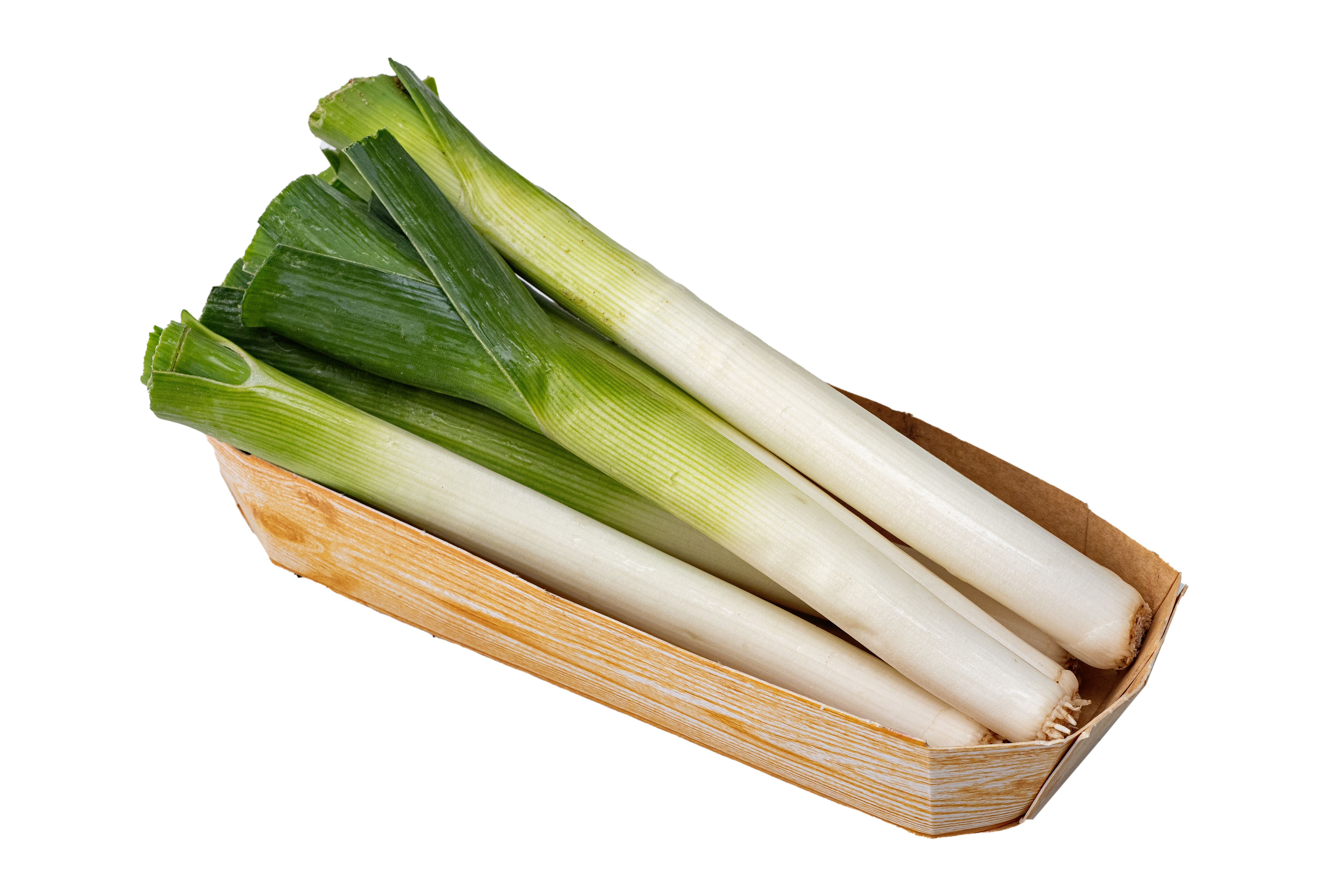Baby leeks
Baby leeks are slender, young versions of the traditional leek, possessing a milder and sweeter flavor profile. Their pale green stalks transition to a white base, making them a visually appealing ingredient. Ideal for sautéing or grilling, they tenderize quickly, showcasing their delicate, onion-like taste.
Characteristics of baby leeks
- Size: Baby leeks are generally thinner and shorter than mature leeks. They are often around the size of a pencil or a bit thicker.
- Color: They possess the familiar green-to-white gradient, with the white part being the portion that’s been buried and shielded from sunlight.
- Taste and Texture: Baby leeks have a milder, more delicate flavor than mature leeks. Their texture is also more tender, making them suitable for a variety of cooking methods or even for consumption raw.
- Edible Portion: With baby leeks, a greater proportion of the stalk is tender and usable compared to mature leeks. This means less waste and more of the leek can be used in dishes.
- Culinary Uses: Due to their tender nature, baby leeks can be grilled whole, sautéed, braised, or added to salads. They don’t require as long of a cooking time as mature leeks.
- Nutritional Profile: Leeks, in general, are a good source of vitamins and minerals, especially vitamin A, vitamin C, vitamin K, and folate. They also contain dietary fiber and beneficial polyphenols.
- Preparation: Like their mature counterparts, baby leeks can trap dirt and grit between their layers. It’s essential to clean them thoroughly before use. Splitting them lengthwise and rinsing under running water can help ensure all the dirt is removed.
- Storage: Baby leeks should be stored in the refrigerator, preferably in the crisper drawer, where they can stay fresh for up to two weeks.
- Growing Season: Leeks are cool-weather crops. Depending on the region and climate, they can be planted in early spring or late summer. Baby leeks are simply harvested earlier than full-sized ones.
- Popularity: Baby leeks have gained popularity in gourmet and upscale cooking due to their delicate flavor and versatility. They are especially popular in European cuisines, particularly French cuisine.

